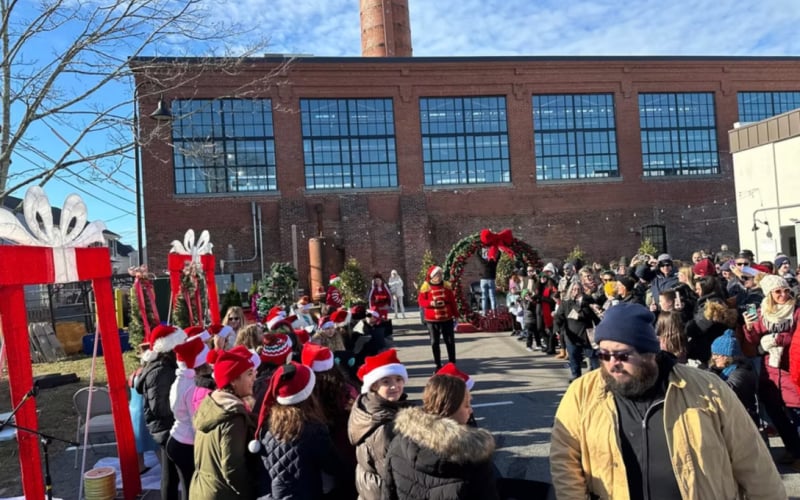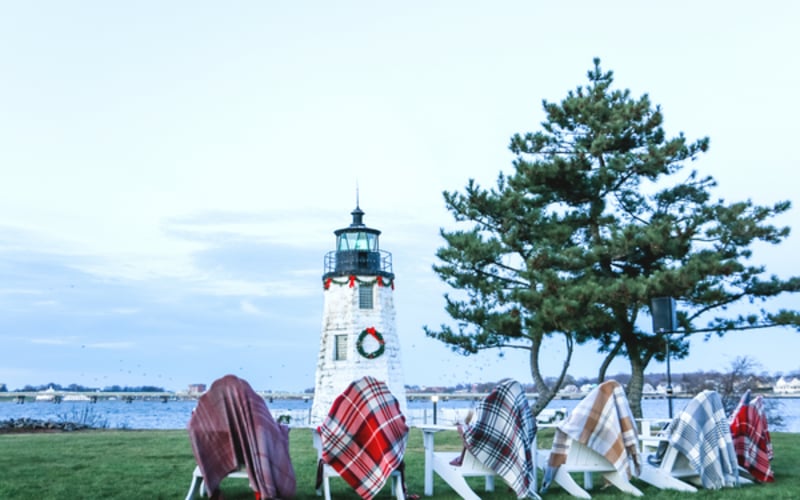Energy efficiency is more than a trend—it’s an essential strategy for reducing utility bills, minimizing environmental impact, and increasing home value. For homeowners in New England, where seasonal weather extremes can drive up heating and cooling costs, making cost-effective energy improvements is particularly advantageous. This guide highlights practical, budget-friendly ways to boost your home’s energy efficiency without significant investments, making it easier to create a comfortable, eco-friendly space.
1. Improve Insulation for Optimal Temperature Control
Insulation is one of the most effective ways to reduce energy consumption, especially in regions like New England, where homes endure both winter chill and summer heat. Adding or upgrading insulation can have a significant impact on heating and cooling costs, often providing one of the best returns on investment.
Key areas to insulate:
- Attic: Heat naturally rises, making attics one of the primary sources of energy loss. Adding insulation to the attic floor prevents warm air from escaping in the winter and keeps cool air in during the summer.
- Walls: Wall insulation is especially important for older homes, which may have less insulation than modern standards require. Insulating walls can help maintain a stable indoor temperature.
- Basement and Crawl Spaces: Insulating below-ground areas can prevent heat from escaping through the foundation, helping maintain consistent temperatures.
Improved insulation keeps your home comfortable year-round, reducing energy bills while providing a cozy living environment.
2. Upgrade to Energy-Efficient Windows and Doors
Windows and doors play a major role in heat loss, so installing energy-efficient options or improving existing ones can enhance efficiency and comfort. If a full window replacement isn’t feasible, there are budget-friendly ways to boost performance.
Cost-effective window and door improvements:
- Weatherstripping and Caulking: Adding weatherstripping around doors and caulking around windows can prevent drafts and improve insulation.
- Thermal Curtains or Shades: Heavy curtains and shades provide an extra barrier to keep cold air out during winter months and block excess heat during summer.
- Window Films: Energy-efficient window films are a cost-effective option to reduce UV rays and maintain temperature consistency. They are easy to install and reduce the need for frequent heating or cooling adjustments.
Investing in energy-efficient windows and doors is particularly beneficial in New England, where weather can change rapidly and effective temperature control is key.
3. Install a Programmable or Smart Thermostat
A programmable or smart thermostat allows homeowners to control indoor temperatures efficiently, adjusting settings based on occupancy and time of day. These devices can reduce energy use by automatically lowering the temperature during times when the home is empty or when everyone is sleeping.
Benefits of programmable and smart thermostats:
- Personalized Schedules: Set specific temperatures for different times of the day to avoid unnecessary heating or cooling.
- Remote Control Access: Many smart thermostats offer mobile apps, allowing users to adjust temperature settings even when away from home.
- Energy Tracking: Smart thermostats often provide insights into energy usage, helping homeowners make adjustments that lead to additional savings.
A thermostat upgrade is an affordable way to save on heating and cooling costs, with many devices paying for themselves in under two years.
4. Swap Out Incandescent Bulbs for LED Lighting
Lighting accounts for a significant portion of household energy consumption, and switching to energy-efficient lighting is one of the simplest ways to save on electricity costs. LED bulbs use far less energy than traditional incandescent bulbs and last significantly longer, making them a budget-friendly, eco-conscious choice.
Reasons to choose LED lighting:
- Energy Efficiency: LEDs use up to 80% less energy than traditional bulbs.
- Long Lifespan: With a lifespan of up to 25,000 hours, LED bulbs reduce replacement costs and frequency.
- Versatility: LED lights are available in various colors and brightness levels, allowing homeowners to create customized lighting for each room.
In addition to energy savings, LED lighting reduces the heat generated by traditional bulbs, helping to maintain a comfortable indoor temperature.
5. Seal Air Leaks to Reduce Heat Loss
Air leaks are common in many homes, especially older properties, and can contribute to energy waste by letting warm air escape in winter and cool air escape in summer. Sealing air leaks is a simple, cost-effective way to improve a home’s efficiency.
Areas to check for air leaks:
- Windows and Doors: Use caulk or weatherstripping to seal gaps around windows and door frames.
- Ductwork: Leaky ducts can lose up to 30% of heated or cooled air, so sealing ductwork ensures efficient airflow and reduces waste.
- Fireplaces and Chimneys: Unused fireplaces can cause drafts; consider using a chimney balloon or draft stopper to prevent air from escaping.
Sealing air leaks reduces the workload on HVAC systems, leading to energy savings and better temperature control.
6. Install Low-Flow Fixtures for Water Conservation
Energy efficiency isn’t just about heating and cooling—reducing water consumption can also save energy, especially when it comes to hot water usage. Installing low-flow fixtures like showerheads, faucets, and toilets conserves water, which in turn reduces the energy required to heat it.
Advantages of low-flow fixtures:
- Reduced Water Bills: Low-flow fixtures can reduce water usage by up to 30%, which also lowers energy bills for heating water.
- Affordable and Easy to Install: Low-flow showerheads and faucet aerators are inexpensive and simple to install without professional help.
- Eco-Friendly: Conserving water is an environmentally friendly choice, particularly in areas where water conservation is a priority.
These fixtures are a cost-effective way to make homes more efficient and sustainable, benefiting both the homeowner’s wallet and the environment.
7. Insulate the Water Heater and Pipes
An energy-efficient water heater setup can make a substantial difference, especially in cold climates. Insulating the water heater and pipes helps prevent heat loss, keeping water warmer for longer and reducing the energy required to reheat it.
Simple insulation steps:
- Water Heater Blanket: Adding an insulating blanket to the water heater tank can reduce standby heat loss by up to 45%, saving on energy bills.
- Pipe Insulation: Insulating hot water pipes keeps water warm as it travels to the faucet, reducing the wait time and lowering energy consumption.
- Lower the Temperature: Setting the water heater temperature to 120°F provides comfortable hot water and prevents energy waste from overheating.
By optimizing water heating, homeowners can enjoy immediate savings on energy costs while extending the life of their water heater.
8. Maintain Heating and Cooling Systems for Efficiency
Routine maintenance of heating and cooling systems ensures they operate at peak efficiency, using less energy to maintain comfortable indoor temperatures. Simple maintenance steps can prevent costly repairs, extend equipment lifespan, and improve overall efficiency.
Maintenance tips for HVAC efficiency:
- Regular Filter Replacement: Changing filters every 1-3 months keeps airflow unrestricted and reduces strain on the system.
- Professional Servicing: Scheduling annual HVAC tune-ups allows professionals to clean, inspect, and optimize the system, ensuring efficient operation.
- Clean Air Vents and Ducts: Dust and debris in vents and ducts can block airflow, so regular cleaning helps maintain consistent performance.
Keeping HVAC systems in good condition is especially important in New England, where seasonal temperature changes require reliable heating and cooling.
9. Use Ceiling Fans to Reduce Heating and Cooling Costs
Ceiling fans are an affordable and efficient way to regulate indoor temperatures without overusing HVAC systems. By circulating air, ceiling fans help maintain a comfortable environment and reduce the need for constant heating or cooling adjustments.
Tips for using ceiling fans efficiently:
- Clockwise Rotation in Winter: In cooler months, set ceiling fans to rotate clockwise at a low speed, pushing warm air down from the ceiling.
- Counterclockwise Rotation in Summer: During warm months, switch fans to counterclockwise to create a cooling breeze.
- Turn Off When Not in Use: Ceiling fans cool people, not rooms, so turn them off when you leave the room to save energy.
Using ceiling fans can cut heating and cooling costs while providing a comfortable and energy-efficient environment.
What’s the Bottom Line?
In New England, where energy costs fluctuate with the seasons, making cost-effective energy upgrades can significantly reduce expenses and enhance comfort. From improving insulation and sealing air leaks to adopting smart thermostats and energy-efficient lighting, there are numerous affordable ways to create a more efficient and environmentally friendly home.
By incorporating these strategies, homeowners can lower utility bills, reduce environmental impact, and make their homes more attractive to future buyers.
Reach Out to Edge Realty
Are you interested in learning more about making your New England home energy efficient or looking to find a property that already incorporates these features? The team at
Edge Realty is here to help. With expert knowledge of the local market, we can provide guidance on energy-efficient homes and affordable upgrades that enhance comfort and value.
Contact us today to discuss your home efficiency goals and explore properties designed to save energy and money year-round.










